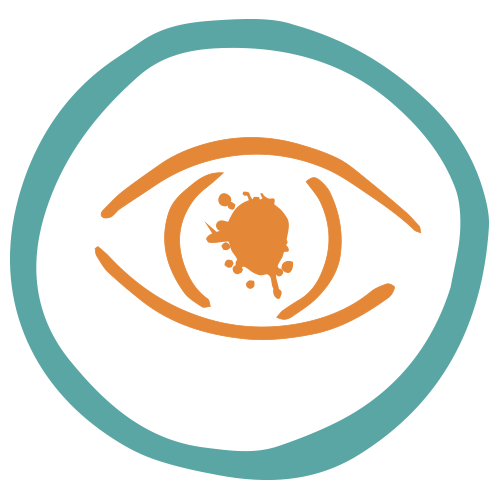Our PSHE curriculum starts with the topic of changing. How we are changing, how our bodies are changing, how our relationships with family and friends are changing and what changes we can look forward to in the future. Every year the students evaluate these sessions which are revised and refined year on year to make sure that we cover what is timely and relevant.
We build on this phase by looking at anatomy and physiology so that all young people are comfortable using the correct words and names for their body parts. We feel that this is really important for two main reasons.
First, it allows us all to deal maturely with substantive, sensitive topic areas without the embarrassment of using these unfamiliar words for the first time.
Secondly, it is a very important safeguarding strategy; this knowledge and use of the proper language enables the vocabulary for reporting abuse should it arise.
Every year we return to recap on what we have learned so far, we build on this knowledge as part of our school council work, we take cues from our students, the local community and global issues. Laying these solid foundations allows us to tackle topics like FGM, breast ironing, rape and sexual violence and forced marriage in a mature and sensitive way. This case study explores how we learn about CSE.
“Our approach to living and growing consists of a comprehensive and developmental programme of teaching and learning, which is delivered in the context of a Healthy School where the health and wellbeing of pupils and the whole school community are actively promoted. Our programme has a positive influence on the ethos, learning and relationships throughout the school. It is central to our values and to achieving our school’s stated aims and objectives. It helps pupils to develop the knowledge, understanding, skills and attitudes they need to live confident, healthy, independent lives now and in the future.”
Top tips from the Assistant Head-teacher
 make sure that PSHE is embedded in your school curriculum from the start. It is the only safe way to have conversations about sensitive topics.
make sure that PSHE is embedded in your school curriculum from the start. It is the only safe way to have conversations about sensitive topics.
 plan carefully, timing the delivery of this session on CSE is essential, there needs to be time to process what they’ve covered with support in the school. There needs to be space in the term and in the school week for follow-up conversations. So, not on a Friday afternoon or the last day of term and try to avoid clashes with other stressful times.
plan carefully, timing the delivery of this session on CSE is essential, there needs to be time to process what they’ve covered with support in the school. There needs to be space in the term and in the school week for follow-up conversations. So, not on a Friday afternoon or the last day of term and try to avoid clashes with other stressful times.
 involve parents. We do this through our open-to-all parents council (separate from the PTA or parent governors who are also welcome of course). We share the minutes from the student’s council and the parent’s council with both groups and in this way open up a dialogue.
involve parents. We do this through our open-to-all parents council (separate from the PTA or parent governors who are also welcome of course). We share the minutes from the student’s council and the parent’s council with both groups and in this way open up a dialogue.
 plan coordinated and consistent approach with clear objectives that involves parents, carers and all professional staff and visiting agencies is key to the success of delivering education on sensitive topics. Build and maintain links within your local community, ask for help and involve your local community.
plan coordinated and consistent approach with clear objectives that involves parents, carers and all professional staff and visiting agencies is key to the success of delivering education on sensitive topics. Build and maintain links within your local community, ask for help and involve your local community.
All the Year 6 pupils spend a whole day learning about the true story of a local girl called Claire.
They learn that when Claire was nine she was abused by her father.
She was groomed by two men when she was 12 years old and left the North of England for London when she was 13.
She spent the next ten years trying to escape the grooming gang, the sex trade and the substance use issues that she developed.
After coming together as a year group to hear the story we return to our form rooms to undertake a number of different activities that help us to reflect on what we have heard.
These activities invite us to think about the story from different perspectives enabling us to identify the risks and signs of CSE that were apparent in Claire’s story.
Post-it notes are made available, throughout the day, for the young people to make a note of any questions they think of that they would like to ask Claire.
The day starts with the reading of Claire’s story to the whole year group.
Back in form room classes young people work in pairs and reflect on what exploitation means, why Claire spoke to the men, why she went with the men and how the men knew that she would.


Next, we read extracts from Claire’s diary and discuss as a class the signs and clues that Claire is being groomed.
We work on the ‘Grooming line’ asking what happens and exploring how the young person being groomed might be feeling. Find out more about Barnardo’s model The Grooming line here.

In this activity the class were split into two groups. Half of the class worked on ideas of what makes a good relationship completing the sentence: ‘Healthy adult relationships have…’. The rest of the class focused on completing the sentence ‘Unhealthy adult relationships have...’. And then we feedback as a whole class. This activity is a good introduction to a discussion about what all relationships should look like.


This is followed by a whole class activity: what should I do if I’m worried about something like this?
"Tell a trusted adult"
“Ring Childline”
0800 1111 - www.childline.org.uk
At the end of the day we meet together again as a whole year group. We share the questions that we have wanted to ask Claire throughout the day. Finally we meet with Claire on whom the story is based. Claire visits schools in our local area as part of initiative with our local police service and police and community support workers. This gives us a chance to ask her our questions.

If you are interested in arranging a CSE day for your school there are links and resources in the information section opposite, and a very important list of things to put in place first in the ‘Do’ section at the beginning of this section.
However, It is also worth remembering that there is a current debate on whether and how to use sensitive materials, such as survivor stories and experiences. Read more about this here. Victim Focus are founders of the campaign #nomoreCSEfilms.
![]()
"Child sexual exploitation (CSE) is a type of sexual abuse. Children in exploitative situations and relationships receive something such as gifts, money or affection as a result of performing sexual activities or others performing sexual activities on them" (NSPCC, 2019)
![]()
“It [CSE] can happen to any one of us and if we know what it is we can stop it happening” (Y6 girl)
“It can happen to male and female” (Y6 boy)
“I learnt what abuse is” (Y6 girl)
“I learnt even trusted adults can let you down” (Y6 boy)
“I didn’t know that people pay money for sex” (Y6 girl)

![]()
“The key thing is that we underestimate what our children can do. We should be looking outwards, we are part of a global community.” (Assistant Head-teacher and dynamic PSHE lead)
“It’s not consent when you’re frightened.” ( Year 6 Teacher)
“This isn’t everyone and some of the nicest people you meet will have been strangers at one time. But it is better for us to be able to talk about bad things rather than pretend they don’t happen.” (Year 6 Teacher)
To find out how this school works creatively to promote pupil voice, see Making Voice Matter








